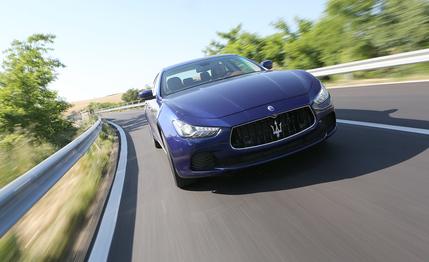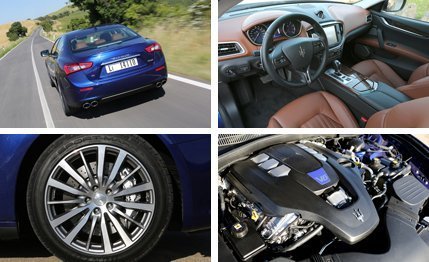 First Drive Review
First Drive Review
Whatever you thought Maserati stood for, you’re going to have to rethink it. In the space of three years, the brand will rediscover turbocharging, introduce a diesel engine, build an SUV (the Levante) and a second, smaller sedan (this Ghibli), and offer all-wheel drive in both of its four-door cars. All this in an effort to increase its 2012 global sales eightfold to 50,000 in 2015 and give Ferrari’s older brother the scale it needs to be stable (more detail on Maserati’s product plans here).
The plan doesn’t lack ambition, and the process has already started with the launch of the turboed, AWD-optional new Quattroporte. We’ve just driven the 2014 Ghibli, the smaller sedan based on the QP. Maserati hopes it will rival “four-door coupes” such as the Mercedes-Benz CLS-class, Audi A7, and BMW 6-series Gran Coupe, as well as their conventional sedan brethren, and provide about half of the sales growth.
With Maserati, a racing heart has always been standard, of both the mechanical and biological types. The two twin-turbo 3.0-liter V-6s with which the Ghibli will debut in the U.S. are no exception. Designed by Schumacher-era Ferrari F1 engine guru Paolo Martinelli, built by Ferrari, and closely related to the senior QP’s 3.8-liter V-8, they will offer 345 horsepower in the base car and 404 horsepower in the S. The latter is shared with the Quattroporte and will only be available with the Q4 all-wheel-drive system. Both mate with ZF’s eight-speed automatic.

With roughly 4150 pounds to motivate, the S ought to hit 60 mph in about 4.5 seconds and will be able to top 177 mph. The 4000-pound base car likely needs 5.4 seconds to reach benchmark speed and tops out at 163 or so mph. Prices have yet to be confirmed, but expect to pay $65,000 for the base model and about 10 grand more for the S. There is a diesel-drinking V-6, but it won’t come to the U.S., and we won’t miss it.
Styling? You can draw certain conclusions from pictures, but we liked it much more when we saw it in the flesh. Those pronounced fender arches are a nod to the Tipo 60 Birdcage, and the Ghibli stands out from its less expressive German rivals. And that’s exactly what the Ghibli needs to do. Its rivals’ booming sales mean their cars are now just traffic. Seeing a Maserati is still an event. Those who simply want to be different will want this car, and might be prepared to forgive a lot in return.